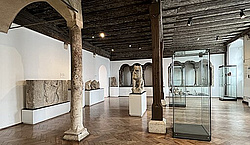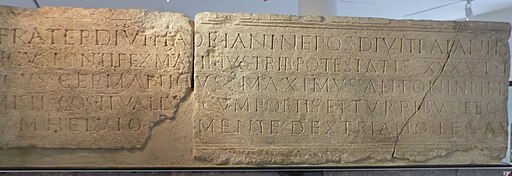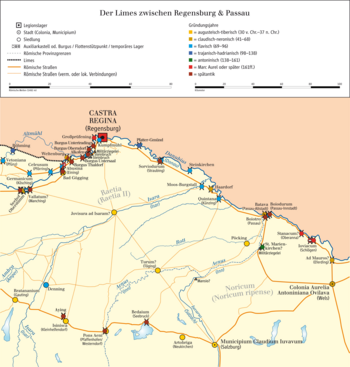Regensburg

The Post-Conference Excursion on Saturday, 7th September 2024 will take us to Regensburg. In addition to Freising, there were three other bishoprics in Bavaria in the 8th century: the old Roman cities of Passau, Salzburg and Regensburg. Regensburg dates back to the Roman legionary camp Castra Regina, which was completed in 179 AD. It was located directly on the Danube, on the northernmost border of the Roman Empire.
After the soldiers left, the camp remained inhabited. In the early Middle Ages, it was the largest inhabited place between the Alps and the Danube and the seat of government of the Agilolfinger family. Like Korbinian in Freising, Emmeram was active here, about whom Arbeo von Freising also recorded a vita of the saint. Emmeram sees Regensburg here for the first time:
Urbs, ut praediximus, Radaspona inexpugnabilis, quadris aedificata lapidibus, turrium exaltata magnitudine, puteis habundans. Cuius septentrionalem partem Danubius suo rigore contra ortum suo cursu infunditur fluenta. Regionis montana fructifera, pascuis dedita, herbis habundantia, feris saltus et frutecta cervis, alcis, bubulis, capraeis, ibicum et omnium bestiarum atque ferarum generibus ornata.
„Die Stadt, nämlich Regensburg, war uneinnehmbar, aus Quadern erbaut, mit hochragenden Türmen, und mit Brunnen reichlich versehen; im Norden bespült sie die Donau, die in geradem Lauf gen Osten strömt. Das Bergland war ergiebig an Obst und bot Weiden und saftiges Gras; das Waldgebirge war mit wilden Tieren bevölkert und das Unterholz mit Hirschen, Elchen, Auerodisen, Rehen, Steinböcken und mit Tieren und Wild aller Art.“ (German Translation B. Bischoff)
From its foundation as an imperial Roman river fort, the city has been the political, economic and cultural centre of the surrounding region. Later, under the rule of the Holy Roman Empire, it housed the Perpetual Diet (a session of the Imperial Diet, the ‘Reichstag’) of the Holy Roman Empire from 1663 to 1806.

The medieval centre of the city was made a UNESCO World Heritage Site in 2006 because of its well-preserved architecture, being the biggest medieval city site north of the Alps, and the city's historical importance for assemblies during the Holy Roman Empire.
We will get a good impression of this beautiful city and its history through guided tours of the historic city center and the Roman section of the Historical Museum: This section offers impressive evidence from the period between the 1st and 5th centuries AD, when Regensburg, ‘Castra Regina’, was the most important military base on the border of the Roman Empire in what is now Bavaria.
And of course a visit to a nice local beer garden is a must!

Schedule and further information
We will travel to Regensburg by train. We will form groups of 5 people, who share a trainticket (Bayernticket) between them. If you want to return earlier (or later), this is of course possible, but you will have to buy a new return ticket yourself.
Costs: approx. 25 euros per person (excluding lunch), to be paid on site.
Schedule:
7:45 a.m. Meeting at Munich main station at platform 25
8:03 a.m. Departure train to Ingolstadt (RE 1/57874 to Ingolstadt; from there 9.05 a.m. train to Regensburg [RE18/ag 84121 to Passau Hbf ])
9:58 a.m. Arrival at Regensburg
10.45 a.m. – 12:15 p.m. guided tour through the historic city center
12:30 p.m. Lunch at own expense in a beer garden (or restaurant, depending on the weather)
2.30 p.m. – 4 p.m. Guided tour of the Roman section of the Historical Museum
4:53 p.m. – 6:55 p.m. Return journey to Munich via Ingolstadt


